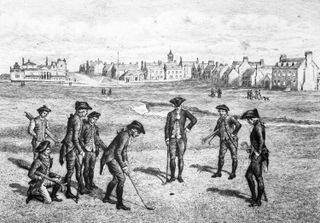The handicap system in golf is what makes ours such a universally enjoyable sport. Elite golfers can play with and compete against relative novices thanks to the golf handicap.
Players of all standards can win club tournaments when the handicap system is being used. With the World Handicap System (WHS) now in operation, players from all over the globe should be able to compete against one another on a fair footing.
The WHS is the culmination of a centuries-long development of golf handicapping, as individuals, clubs and then governing bodies have sought to introduce, adapt and improve various systems to deliver the most equitable method of levelling the playing field.
Here we look at a brief history of golf handicapping and ponder on what system has been the best. Surely, it’s the current WHS? … Well, perhaps…
The beginnings
Early golfers at St Andrews
(Image credit: Getty Images)
Some sort of golf handicapping must have been in place since the earliest days the sport was played. As wealthy Scots started to play matches against one another (almost certainly with money involved) from the mid 15th century onwards, there would surely have been a method of giving and receiving strokes to ensure the matches were competitive.
That we can only speculate on. What we do know is the first written mention of the golf handicap comes from the diary of an Edinburgh University medical student called Thomas Kincaid.
In January of 1687 he wrote about games on Bruntsfield and Leith Links and the best way to give strokes to prevent an opponent gaining too much advantage. He wrote “At golf, whether it is better to give a man two holes of three, laying equal strokes, or to lay three strokes to his one and play equal for so much every hole.”
From 1782 we have a written record from the Honourable Company of Edinburgh Golfers when Captain Elphinston challenged a Mr. Allan to a match. It was written that, “Captain Elphinston challenges Mr. Allan next Saturday best of three rounds, half a crown a hole, that he beats Mr. Allan with the Club against his throwing and gives him half one.”
“Half one” meant that Elphinston would give Allan one stroke every two holes. There was also “third one” a shot every three holes, “one more” a shot a hole, and “two more” two strokes a…
..
Click Here to Read the Full Original Article at Latest from Golf Monthly in Features…
